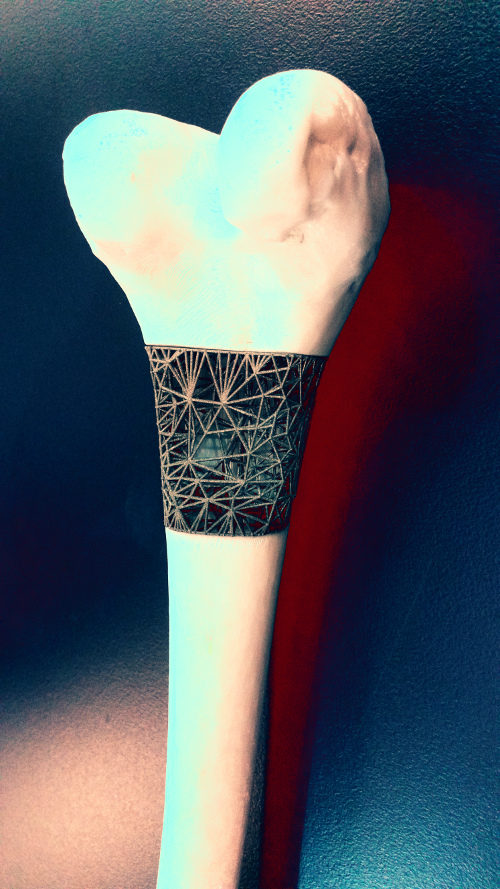Printer switch for human bits
 Engineers are using an inverted 3D-printing method to produce new body parts.
Engineers are using an inverted 3D-printing method to produce new body parts.
Experts around the world are working on new technologies for regrowing bones and tissue, building bio-scaffolds that harness the body’s natural ability to heal itself, to rebuild bone and muscle lost to tumours or injuries.
Many of these new techniques employ 3D-printed scaffolds that can be implanted in the body to support cell regrowth. However, making these structures small and complex enough for cells to thrive remains a significant challenge.
But now, researchers from RMIT and St Vincent’s Hospital Melbourne have overturned the conventional 3D-printing approach.
Instead of making the bioscaffolds directly, the team 3D-printed moulds with intricately-patterned cavities then filled them with biocompatible materials, before dissolving the moulds away.
Using this indirect approach, the team created fingernail-sized bioscaffolds full of elaborate structures that, until now, were considered impossible with standard 3D-printers.
“The shapes you can make with a standard 3D printer are constrained by the size of the printing nozzle - the opening needs to be big enough to let material through and ultimately that influences how small you can print,” says lead researcher Dr Cathal O’Connell, a Vice-Chancellor’s Postdoctoral Fellow at RMIT.
“But the gaps in between the printed material can be way smaller, and far more intricate.
“By flipping our thinking, we essentially draw the structure we want in the empty space inside our 3D printed mould. This allows us to create the tiny, complex microstructures where cells will flourish.
“Importantly, our technique is versatile enough to use medical grade materials off-the-shelf.
“It’s extraordinary to create such complex shapes using a basic ‘high school’ grade 3D printer.
“That really lowers the bar for entry into the field, and brings us a significant step closer to making tissue engineering a medical reality.”
Currently, treatments for people who lose a significant amount of bone or tissue due to illness or injury consist largely of amputation or metal implants.
There are still some major bioengineering challenges that need to be addressed for 3D-bioprinting technology to become a standard part of a surgeon’s toolkit.
In orthopedics, a major sticking point is the development of a bioscaffold that works across both bone and cartilage.
“Our new method is so precise we’re creating specialised bone and cartilage-growing microstructures in a single bioscaffold,” Dr O’Connell said.
“It's the surgical ideal - one integrated scaffold that can support both types of cells, to better replicate the way the body works.”
Tests with human cells have shown bioscaffolds built using the new method are safe and non-toxic.
More details are available here, and a demonstration can be seen in the video below.








 Print
Print